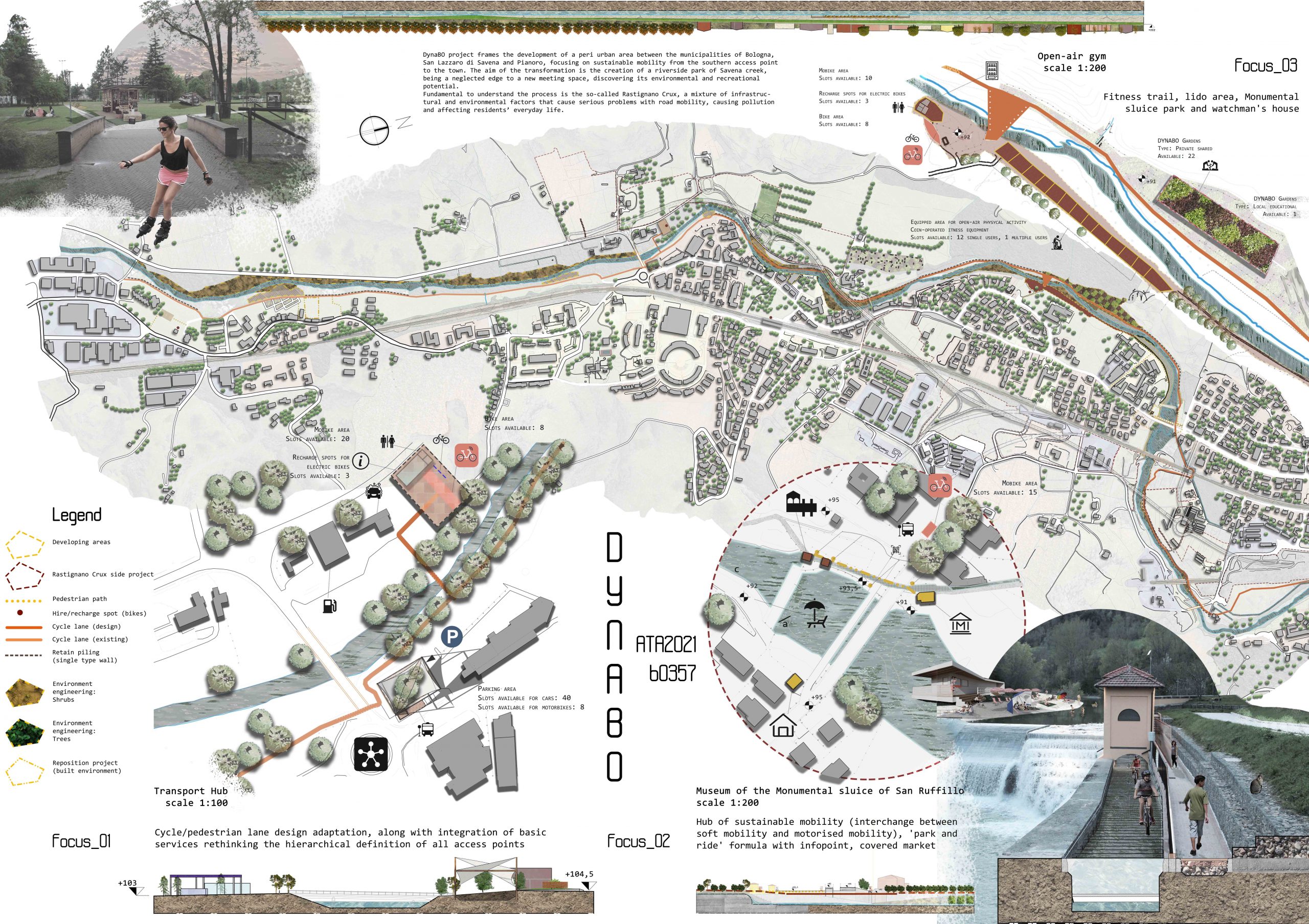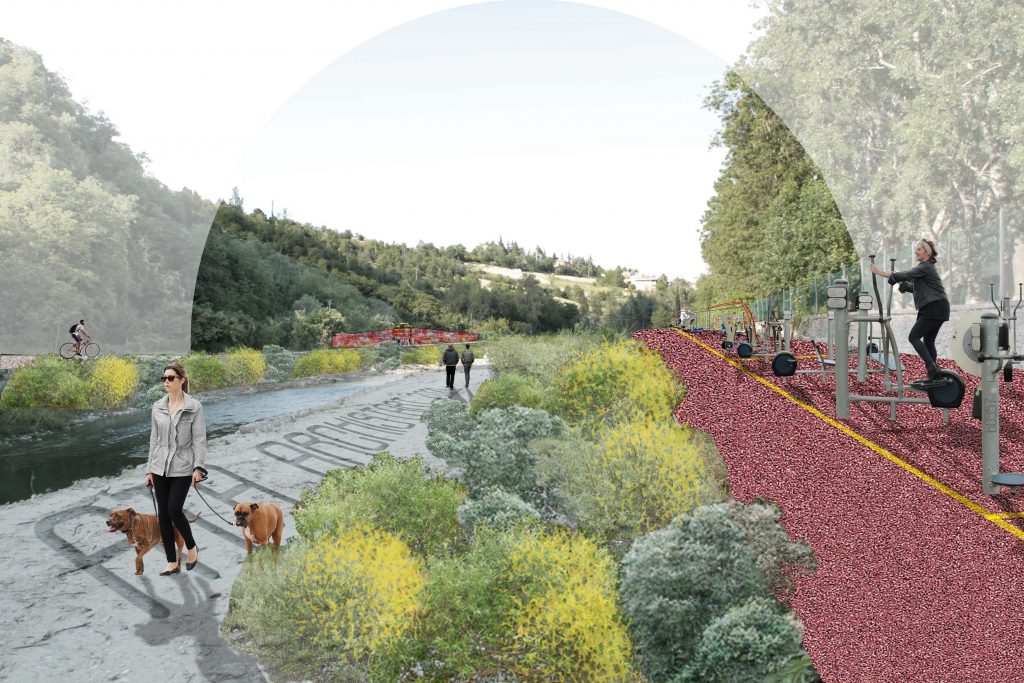DynaBO project frames the development of a periurban area between the municipalities of Bologna, San Lazzaro di Savena and Pianoro (Italy), focusing on sustainable mobility from the southern access point to the town. The aim of the transformation is to create of a riverside park of Savena creek, from a neglected edge to a new meeting space, discovering its environmental and recreational potential.
Within is focal points the project includes a cycle lane, shared urban gardens and public green spaces, routes hierarchised to protect vulnerable road users, integration with soft mobility of the existing system in Ponte Oche parking as a transport hub, along with redeveloping the lido and adding another piece to local industrial heritage.
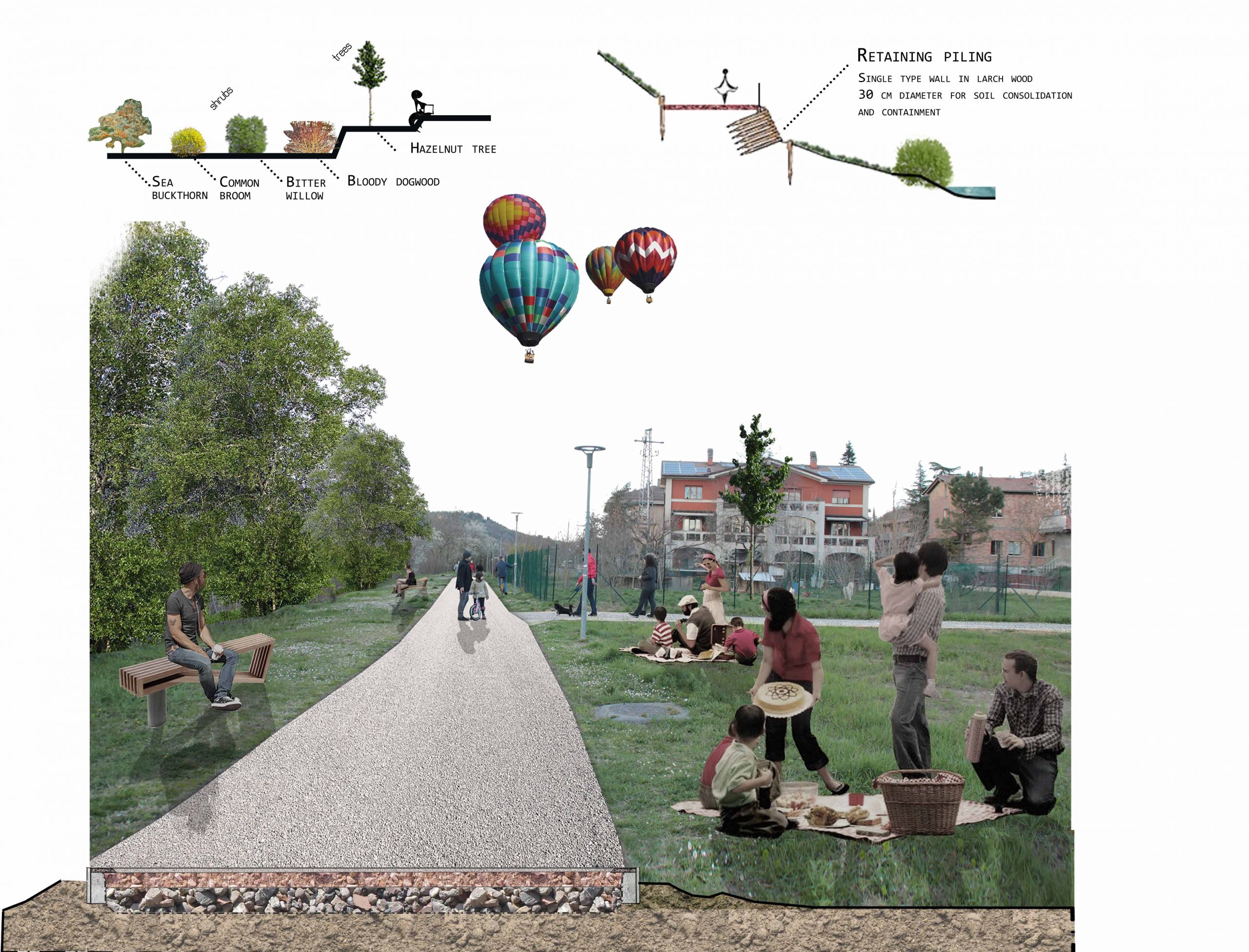
Fundamental to understand the process is the so-called Rastignano Crux, a mixture of infrastructural and environmental factors that cause serious problems with road mobility, causing pollution and affecting residents’ everyday life. Restitching process of discontinuities in the existing lane is realised through the elimination of environmentally harmful materials (cement cast on site). According to the environment, the passable space of the cycle lane is made of two different materials: • White concrete, for more consolidated urban areas. • Beaten earth, to give less impacted areas a more natural and authentic appearance. Concerning stratigraphy, both types follow the same procedure: first, one geotextile membrane above the clearing, then with two layers of stone chipping, the first one with quarry material naturally stabilized and the second one with quarry material stabilized in concrete. Beside the finishing layer in beaten earth or white concrete, cobblestone guides for sightlesses are provided - tracks higher than 5 cm could cause any user to stumble - stopped in section by two vibro-compressed, concrete kerb to protect from emerging roots.
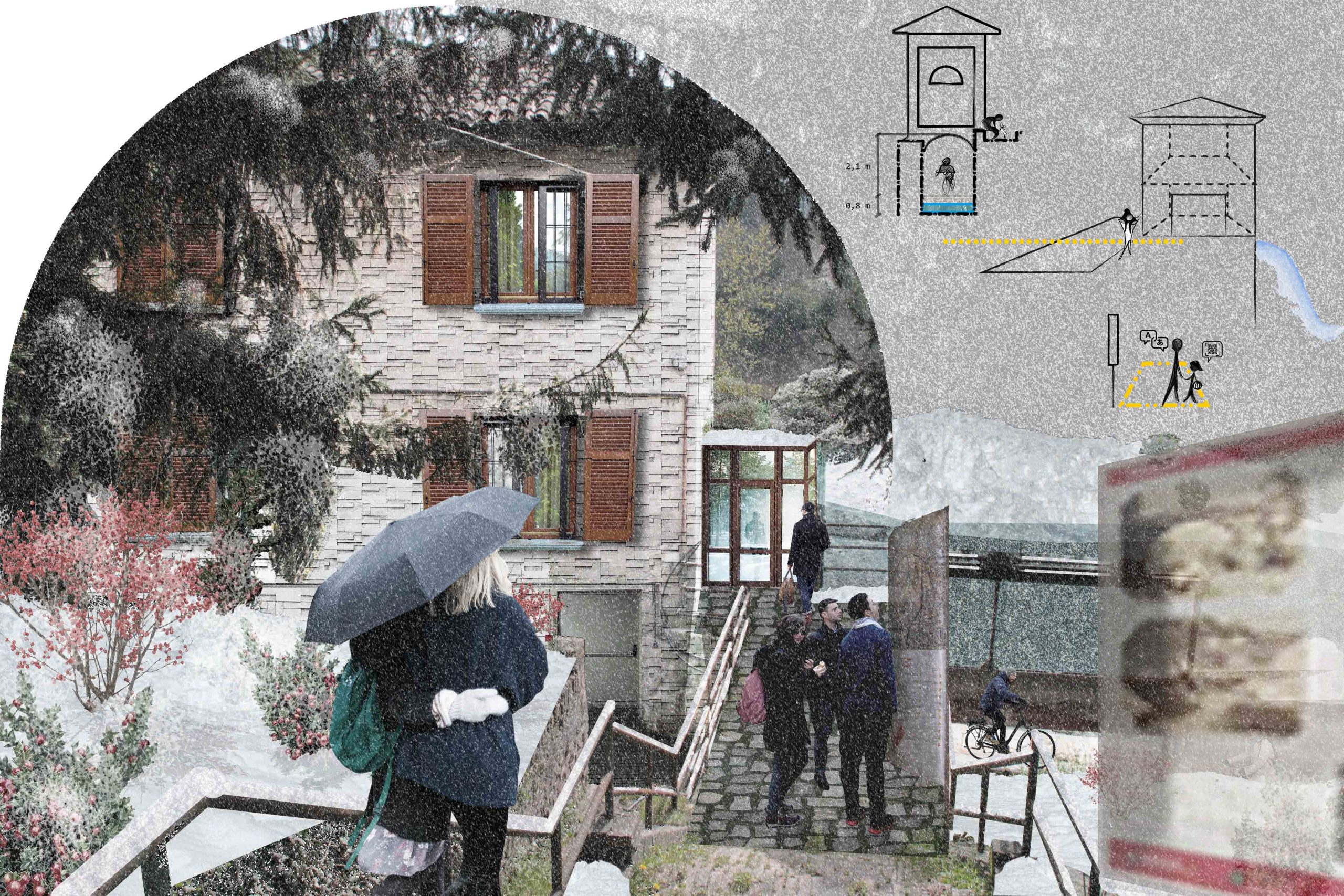
To mitigate the hydrogeological risk, some simple environmental engineering interventions are provided: • Cleaning process of the riverbed; • Shrubs in the filter area (soil consolidation; • Trees to protect the most sensitive areas (channelling rainwater). For each segment native species were chosen, according to landscape. In Rastignano and San Ruffillo areas, land must be adapted to cope with hydrogeological instability: the least invasive solution is the insertion of single type support walls in larch wood (diameter is 30 cm) whose poles are arranged in a reticular manner to support the slope, below or above the shore. The gravelled material has a draining function, supported by a geotextile layer in non-woven fabric. The environmental value is also emphasized thanks to the insertion of Glulam larch piers, whose shape follows the elevation profile, in correspondence with identified panoramic points.
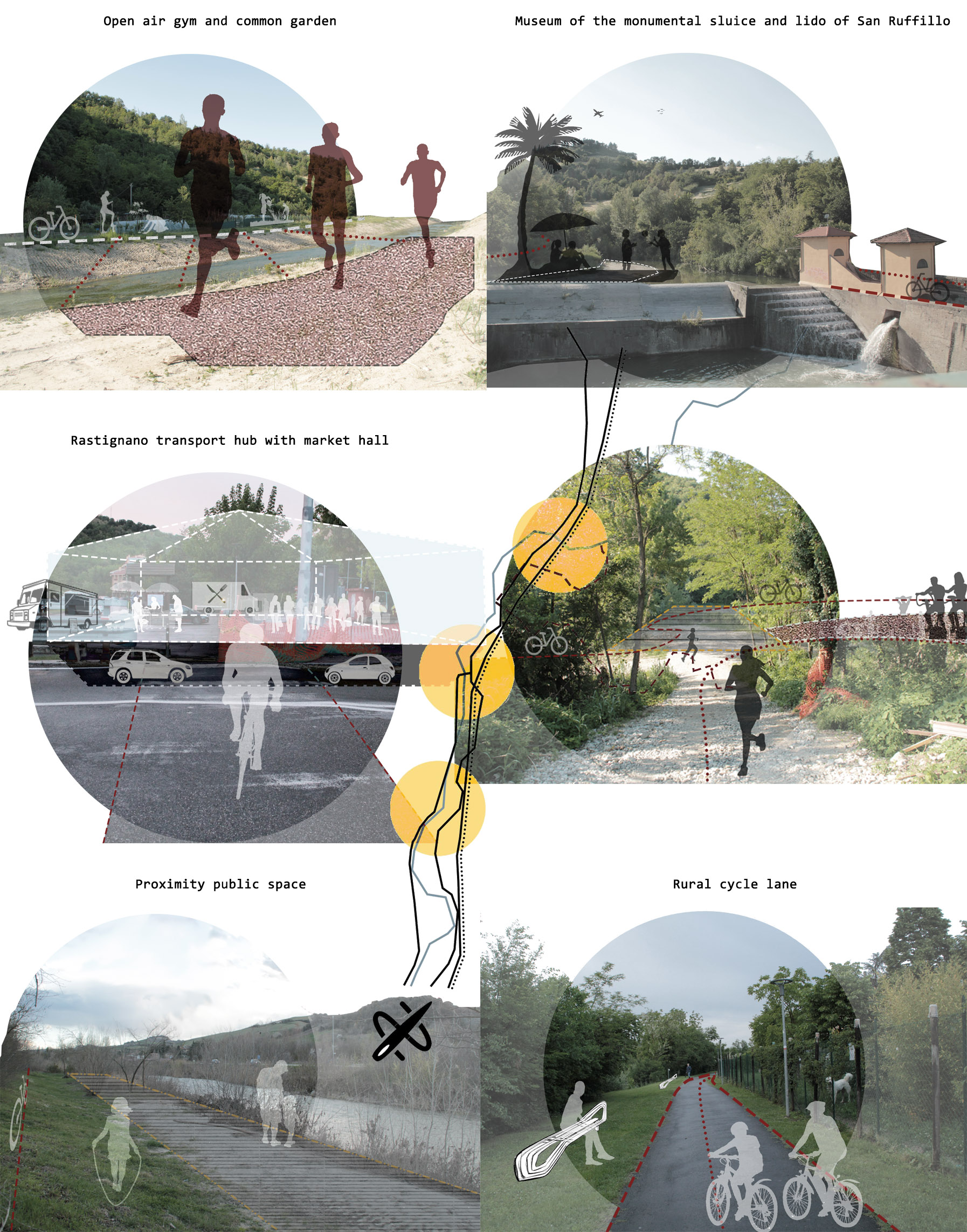
The Board:
